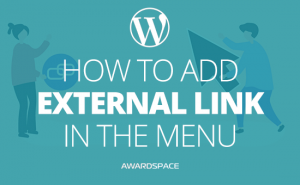There are numerous reasons for you to want to add similar posts at the end of the one you are writing. For starters, you’ll enhance the user experience and the easiness and smoothness that the people will have going from article to article and reading your content.
Of course, the easier it is for your website’s users to go from article to article, the more of your content they will read, and that could only benefit you.
On top of that, the end of your articles, won’t leave the users not knowing what to do and evading feeling unease by leaving your website altogether.
Also, although it won’t be directly, the higher engagement with your content will probably affect the SEO of your WordPress website positively.
What is a Related Post
Put simply, showing a few related posts at the end of an online article is a technique to keep the attention of the people on your website. It is a technique most recognizable in the news media websites, where at the end of each news article about a specific subject, they show the consumers “more about the topic”.
There are two main ways by which the relation between the posts is defined.
- It could be by category or another taxonomy (like tags).
- By Keyword.
When showing related posts by taxonomy, in WordPress, this could be either a category or a tag.
For example, if you are writing an article about the president of the USA, the article’s write categorization will probably be under the “politics” category. Then again, if you are showing all the related posts from the category politics, what the consumers will see, is not required to be related with the president of the USA, nor with the content of the present article.
Thus, you might want to use another way to group and filter the related posts below your articles.
Like tags.
The tags in WordPress are a good way to further specify your content.
For example, in the category politics, you might have a sub-category the President of the USA, which in some cases would be perfectly fine. Then again, the President is usually changed in four to eight years. Thus you might want to further specify the articles by adding a tag. Like “Donald Trump” or “Barrack Obama”.
When you are using tags to show related posts, they are a lot more specific, but on the other hand, they show your users only one type of content, and it might be hard for them (if they only use the related posts to navigate) to read something else.
The other way to have related posts is by the context, or by a keyword. Where the algorithm will automatically try to understand where two or more articles have an overlap. By defining where the overlap is, WordPress will automatically generate similar posts.
Bear in mind, that, depending on your writing style, you might end up with related posts under your articles that are not at all (that much) related.
How to Add Related Posts to Your WordPress Website
As usual, the easiest way to add related posts in WordPress is by adding a plugin.
Probably the best plugin to the job is the Contextual Related Posts, which is not only well known, and frequently updated plugin. What is more, the plugin is highly customizable and will let you show similar posts in any way you want.
To install the plugin, you can either go to Plugins -> Add New, and search for it, or download it from the link above, and then go to Plugins -> Add New, this time uploading it from your PC.
If you are about to search the plugin through WordPress’s plugin search engine, you should expect to see something like this:

Either way, you need to Install and Activate the plugins.
Once the plugin is installed and activated, related posts will be automatically be shown below each of your posts. What is left for you is to customize the plugin, so it shows the posts where you want them and the way you want them to be shown.
To do so, you need to go to the Contextual Related Posts’ Settings page.
When you open the plugin’s setting page, which looks like this:
contextual-related-posts-settings image
What is left for you to do is to tune the plugin.
Jetpack
On the other hand, if you are using the multi purposeful plugin Jetpack, you will already have the functionality of showing related posts. What is left for you is to enable the module. Doing so is an easy process. Go to Jetpack -> Settings -> Traffic. From there turn the related posts section on. From here, you can customize the “related posts” as well. Go to Appearance -> Customizer.
There is an upside of using Jetpack instead of another plugin that offers the same solution. Jetpack will have the processing happen off-site, which could enhance the loading speed of your WordPress website. Of course, you can do that by setting up caching or choosing a powerful WordPress Hosting service.
The point is, you now know how to add similar posts at the end of your articles.



